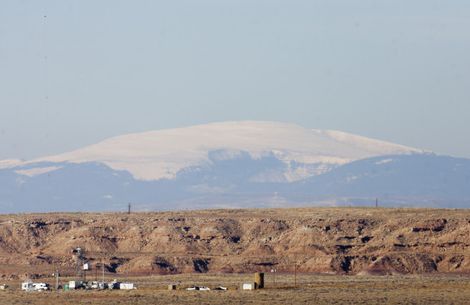This is an archived article that was published on sltrib.com in 2012, and information in the article may be outdated. It is provided only for personal research purposes and may not be reprinted.
Next time you step outdoors for some exercise, you may want to pay heed to more than the weather.
Exposure to high summer levels of ozone can take a toll on your health, irritating your eyes, nose and throat and worsening allergy and asthma symptoms, say state officials who have developed tools to help residents forecast high-ozone days and monitor their sensitivity.
Ozone is an odorless, colorless gas created by the sun's heat and light acting upon gasses and pollution in the atmosphere. Levels fluctuate during the day with higher levels generally in the afternoon.
The most serious effects come from heavy or prolonged exposure to levels above the federal standard of .075 parts per million, said Steve Packham, a toxicologist at the Department of Environmental Quality.
The department publishes hourly ozone level updates and weekly forecasts on its web site, which Packham urges Utahns to check before exercising outside.
Of course, it's nearly impossible to avoid exposure altogether, which is why the Utah Department of Health built a tracking tool to help residents gauge their sensitivity.
Small children, seniors, people with heart and lung conditions and those who work outdoors tend to be most sensitive, but everyone is different.
Monitoring ozone levels and the symptoms you experience "can help you plan your day and decide when to move your activities indoors," said Kellie Baxter, an asthma specialist at the Utah Department of Health.
The health department also has fact sheets and video tutorials online.
— Kirsten Stewart —
Ozone tracker
For ozone forecasts and tips and tools for tracking your activity levels and ozone exposure visit: http://www.health.utah.gov/asthma/ or call 1-888-222-2542.



